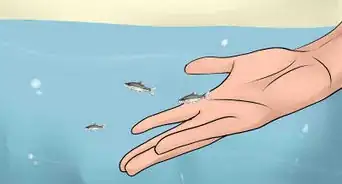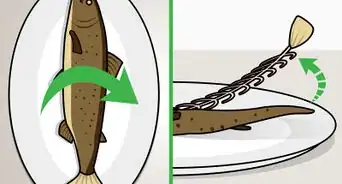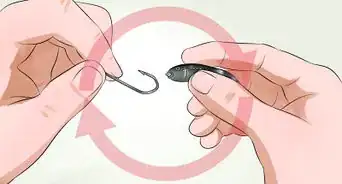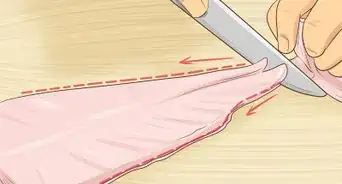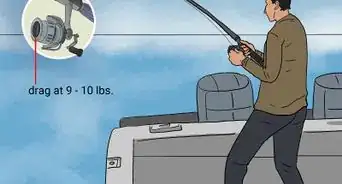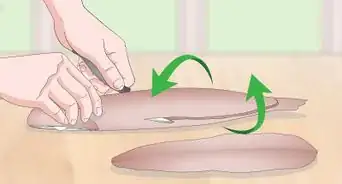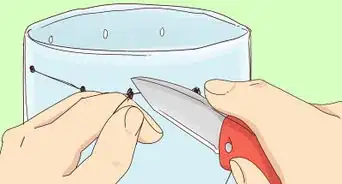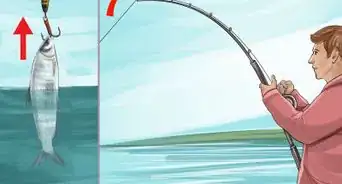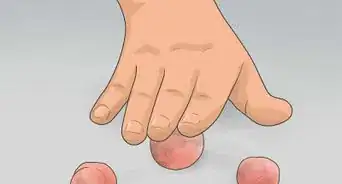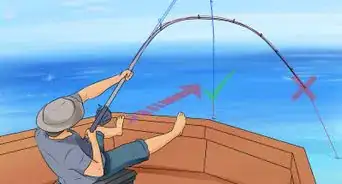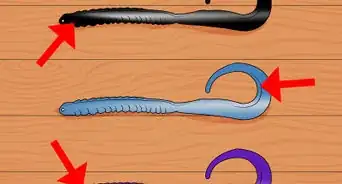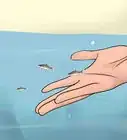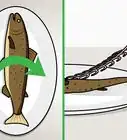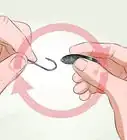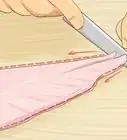This article was co-authored by wikiHow Staff. Our trained team of editors and researchers validate articles for accuracy and comprehensiveness. wikiHow's Content Management Team carefully monitors the work from our editorial staff to ensure that each article is backed by trusted research and meets our high quality standards.
wikiHow marks an article as reader-approved once it receives enough positive feedback. In this case, 98% of readers who voted found the article helpful, earning it our reader-approved status.
This article has been viewed 243,906 times.
Learn more...
To fishermen, “minnow” refers to any small fish used for bait, which may or may not be one of the members of the minnow family. Minnows are a popular baitfish for species such as bass, bluegill, crappie, brown trout, walleye, northern pike, and muskellunge. Minnows are most effective as baitfish when hooked correctly; the correct way to hook a minnow depends on how you plan to fish it.
Steps
Hooking the Minnow
-
1Hook a minnow through its lips when trolling or when repeatedly casting and retrieving.[1] Hooking a minnow this way lets it swim naturally when being pulled through the water.
- Rigs that call for lip-looked minnows include live-bait rigs such as a sliding weight or drop-shot rig, as well as with a sinker and bobber. You can also hook a minnow this way on a jig head to “sweeten” the lure.
- When hooking a minnow through the lips, thread the hook through first the lower, then the upper lip. Because the hook will turn point up, this will let the minnow swim upright.
- Hooking a minnow through the lips will prevent water from entering its mouth and exiting its gills, causing it to eventually die. Check live minnows hooked this way often and replace them when they show signs of dying.
-
2Hook a minnow through its back when still fishing.[2] Hooking a minnow through the back, just behind its dorsal fin, lets it swim more naturally when rigged under a sinker to keep it under the water and a bobber about 18 inches (45 cm) ahead of the minnow to keep it from going down too far.[3]
- This method is also recommended for using minnows as bait on a tip-up when ice fishing.
- A minnow hooked through the back can survive longer than one hooked through the lips. However, if you pierce the minnow’s spine when hooking it this way, you’ll paralyze it.
Advertisement -
3Hook a minnow through its tail when fishing it without any weight or bobber. This lets the minnow swim as freely as possible when it is not pulling any weight other than that of the hook.
- Fishing a minnow with an unweighted line works best when casting to a specific target or when fishing for fish suspended in trees or near a boat dock.[4]
- Some anglers also use the tail hook method when using a very light sinker on the line.
Tackle and Rigs For Minnow Fishing
-
1Choose the right hook. The size of hook you use depends on how large the minnows you’re fishing are.
- For minnows under 3 inches (7.5 cm), a size 4 or size 6 hook works best.
- For minnows 4 to 5 inches (10 to 12.5 cm) or larger, you can go as large as a size 2, 1/0, or even 2/0. [5]
-
2Tie direct. Although snap swivels make it easier to change hooks and lures, they also add extra weight that can upset the minnow’s swimming action.
- You can, however, rig either a barrel swivel or a three-way swivel some distance ahead of the hook to fish with either a sliding sinker (using the barrel swivel as a stop) or a dipsey sinker or split shot (with the three-way swivel).
-
3Use thinner line in clear water. Lines of 6 to 8 pound test (3 to 4 kg class) are recommended when fishing clear rivers or lakes.
Taking Care of Minnows While Fishing
-
1Maintain a cool temperature. Minnows thrive best in cool water or water of a temperature no higher than that of the water they’re being fished in.
- Cooler water holds more oxygen than warmer water. Keeping your minnow bucket out of direct sunlight will keep the water cooler.
- If the water in the minnow bucket is in danger of getting too warm, you can add ice in small amounts. Too much ice at once, however, will cool the water too rapidly and will send the minnows into shock, eventually killing them.
- If the temperature of the water in which you’re fishing sharply differs from that of the minnow bucket, temper the bucket water by gradually adding outside water to the bucket. Although some minnow buckets are designed to be immersed in the water you’re fishing, doing so before tempering the water gradually will shock and kill the minnows.
-
2Keep the water clean. Just as with caring for fish in an aquarium, you need to filter and change the water in your minnow bucket when keeping minnows in it for a long period of time.
- If your minnow bucket water comes from a city tap, add a few drops of de-chlorinating solution to take out any chlorine present in the water.
- If the bucket water turns cloudy, change it immediately to remove the ammonia built up from the fishes’ waste excretions.
-
3Consider an aerator. Portable aerators add oxygen to the water in the minnow bucket, which can help keep your minnows alive longer. Aerators typically run on batteries, but some may include adapters to connect them to a 12-volt battery.
- Some aerators let you adjust the level of oxygen they deliver to the water. Generally, you want to maintain an output of tiny bubbles, which carry more oxygen, and don’t push the fish around the way larger bubbles might.
- Choose an aerator that runs as quietly as possible to avoid disturbing you when you’re fishing.
-
4Don’t overcrowd your minnows. Too many baitfish in too small a bucket leads to increased competition for the available oxygen in the water and increases the amount of waste ammonia.
- A 1-gallon (3.79 l) minnow bucket can handle up to 6 dozen 3/4 to 1 inch (19.1 to to 25 mm) fathead minnows, 4 to 5 dozen 2 to 3 1/2 inch (50 to 88.9 mm) shiner minnows, and 1 to 1 1/2 dozen chubs of 3 1/2 inches (88.9 mm) or larger.
- For very large baitfish, such as 10 to 18-inch (25 to 45.72 cm) suckers, a 5-gallon (18.93 l) bucket is recommended.
Community Q&A
-
QuestionWhere can I find minnows?
 Mr fishermanCommunity AnswerYou can find minnows at bait shops, or you can catch your own in a minnow trap.
Mr fishermanCommunity AnswerYou can find minnows at bait shops, or you can catch your own in a minnow trap.
Warnings
- Many jurisdictions have regulations about using, transporting, and disposing of minnows and other baitfish due to the presence of viruses such as viral hemorrhagic septicemia. Consult the department of natural resources for the state, province, or other jurisdiction you plan to fish with minnows in to familiarize yourself with and follow its regulations.⧼thumbs_response⧽
References
About This Article
When you hook a minnow to use for bait fish, where you place the hook depends on how you like to fish. If you are trolling or repeatedly casting, run the hook through the minnows lips so it will appear to swim naturally as it’s pulled through the water. When ice fishing or using a sinker to still fish, hook the minnow through its back. To fish with an unweighted line, hook the minnow through its tail. Keep reading to learn the best tackle and rigs for minnow fishing!
